Past Exhibition
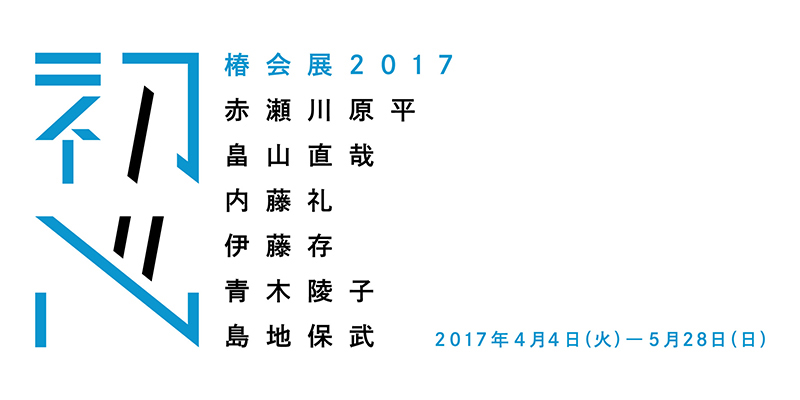
Tsubaki-kai 2017 –Shoshin–
— Genpei Akasegawa, Naoya Hatakeyama, Rei Naito, Zon Ito, Ryoko Aoki, and Yasutake Shimaji—
April 4(Tue) — May 28(Sun), 2017
The Shiseido Gallery is pleased to announce the fifth and final exhibition by members of the Seventh Tsubaki-kai, a series of exhibitions that have been running at the Shiseido Gallery each spring since 2013. The Tsubaki-kai is an artists’ exhibition group created in 1947 as part of the Shiseido Gallery’s reopening after being closed for a time due to the Second World War. With each iteration, the membership of the Tsubaki-kai has continued to change, and this year marks its seventieth anniversary.
- Genpei Akasegawa
- After showing the work “Hagu” associated with the “1000-Yen Notes Incident” at his first Tsubaki-kai exhibition, previous exhibitions have travelled back through the decades of Akasegawa’s career, featuring the magazine illustrations and serialized picture diaries he did from the 90s, 80s, and 70s. This time we present some of the “Objects: Wrapped in Model 1,000-Yen Notes III” works he did in the 60s and a self-portrait oil painting from the 50s.
- Naoya Hatakeyama
- Hatakeyama’s series of works exhibited in Tsubaki-kai exhibitions thus far have all shown different personalities. This year he presents a series on the subject of the Thamesmead housing developments built outside London in the 60s and 70s, all paired with texts from real estate advertisements from the same time. Hatakeyama also exhibits photographs of Genpei Akasegawa’s atelier taken in January this year.
- Rei Naito
- Continuing to focus on the same themes she’s been pursuing since her first Tsubaki-kai exhibition in 2013, Naito will continue her gradually changing “color beginning” and “human” works, as well as an “untitled” work comprised of flowers arranged in a water-filled glass jar.
- Zon Ito
- In past exhibitions Ito has used techniques like embroidery, drawing, and animation to present diffused and linked images, but this time he shows the embroidery works using a new technique and new works of clay pictures.
- Ryoko Aoki
- Aoki has thus far created works being aware of “unconsciousness,” relationships with other people, and other diverse approaches. This time she will present experimental new drawings that reconsider the concept of “picture drawing” itself. She will also conduct a “zine-making” workshop.
- Yasutake Shimaji
- Shimaji has so far created improvisational performances for the Tsubaki-kai, but for this exhibition he has created a more choreographed work to be presented as the Altneu “dance unit” with fellow dancer Hana Sakai. He shows installation works and will also present dance performances in the exhibition galleries.
About the Seventh Tsubaki-kai
The Seventh Tsubaki-kai was formed in 2013 by five artists, Genpei Akasegawa, Naoya Hatekeyama, Rei Naito, Zon Ito, and Ryoko Aoki, all presenting new and previously unseen works in a succession of exhibitions. In 2015, following the passing of Akasegawa, the group added dancer and choreographer Yasutake Shimaji as a new member. This first-ever inclusion of the performing arts has brought a new vitality to the group’s artistic endeavors. Since 2015 works by the late Genpei Akasegawa have also continued to be presented, keeping his presence alive among the other Tsubaki-kai members.
About the Shoshin (Beginner’s Mind) Subtitle
The thematic subtitle Shoshin was chosen in the wake of the 2011 Great Tohoku Earthquake as recovery efforts seemed to the artists to invite opportunities to reconsider the idea of “starting over” and “new beginnings.” The Shinmeikai Japanese Dictionary defines shoshin (beginner’s mind) as “the purity of thought and feeling experienced when first engaging or attempting something.” The Noh master Zeami, in writing about the wisdom underlying his art, advocated “never forgetting the beginner’s mind” as a mental stance useful in confronting new experiences throughout the various stages of life. In keeping with this idea of renewal, graphic designer Masayoshi Nakajo has been recreating and renewing the Tsubaki-kai exhibition logo each year.
■Exhibiting Members
| Genpei Akasegawa (1937–2014) |
Born in Yokohama in 1937. Lived in Tokyo. Akasegawa was a painter, author, illustrator, avant-garde artist, founding member of the Street Observation Society, and defendant of the famous “1000-Yen Notes Incident.” In 1981 he won the 84th Akutagawa Literary Prize for his short story My Father Vanished (written under the pseudonym Katsuhiko Otsuji). In 1989 he collaborated with Hiroshi Teshigahara on the screenplay for the film Rikyu, which won a Best Screenplay Award from the Japan Academy. Akasegawa’s published works include: The Riddle of Mr. Shinkai (Bunshun Library); Hyper-Art Thomasson; The Power of the Old (Chikuma Library); World is Filled with Coincidences (Chikuma Shobo); Leica’s Good, But I Want Watches (C’s-Factory); and Shotokutaishi under the Lense (Gengi Shobo). A phrase from the Japanese title of The Power of the Old even entered the popular lexicon in 1998. Akasegawa’s most recent exhibitions have included Overflowing Images: Printed Media & Arts After the Anti-Art 1960s–70s (2008) at the Urawa Museum of Art; Akasegawa Genpei’s Sampo no Shukaku (2010) at Yokohama City Public Gallery Azamino; TOKYO 1955–1970 / Avant-garde Arts (2012–13) at the Museum of Modern Art in New York; Hi-Red Center: The Documents of Direct Action (2013) at the Nagoya City Art Museum and the Shoto Museum of Art; Katsuhiko Otsuji × Genpei Akasegawa: A Polyhedron of Literature & Art (2014) at Machida City Kotoba Land; and Genpei Akasegawa’s Principles of Art: 1960s–Present (2014–15) at the Chiba City Art Museum, Oita Art Museum, and Hiroshima City Museum of Contemporary Art. |
|---|---|
| Naoya Hatakeyama | Born in Rikuzentakata, Iwate in 1958. Lives in Tokyo. Hatakeyama studied photography under Kiyoji Otsuji at the University of Tsukuba’s School of Art and Design, completing postgraduate studies there in 1984. Since then he has been based in Tokyo, focusing on photographic series showing the relationships between nature, cities, and photography. In 2001 Hatakeyama exhibited along with Masato Nakamura and Yukio Fujimoto in the Japanese Pavilion at the 49th Venice Biennale. His work has been shown in numerous solo and group exhibitions in Japan and abroad, including Naoya Hatakeyama: Natural Stories at the Tokyo Metropolitan Museum of Photography (2011) for which he received the Minister of Education, Culture, Sports, Science, and Technology’s Art Encouragement Prize of Fine Arts. In 2012, he participated in the Japanese Pavilion at the Venice Biennale’s 13th International Architecture Exhibition (earning the Leone d’Oro award). In 2016-17, his solo show Naoya Hatakeyama Cloven Landscape was held at sendai mediatheque. |
| Rei Naito | Born in Hiroshima in 1961. Lives in Tokyo. Naito earned a degree in visual communication design from the College of Art and Design, Musashino Art University in 1985. She gained recognition for One Place on the Earth at the Sagacho Exhibit Space in 1991, and she later showed this work in the Japanese Pavilion at the 47th Venice Biennale in 1997. Her major solo exhibitions have included: Migoto ni harete otozureru wo mate at the National Museum of Art, Osaka (1995); Being Called at the Galerie im Karmeliterkloster, Frankfurt am Main (1997); Giving Back / Reconnaissance at the Asahi Beer Oyamazaki Villa Museum, Kyoto (2005); matrix at the Nizayama Forest Art Museum, Toyama (2007); Tout animal est dans le monde comme de l’eau à l’intérieur de l’eau at the Museum of Modern Art, Kamakura (2009); and the emotion of belief at the Tokyo Metropolitan Teien Art Museum (2014). Permanent works include Being given at Kinza, an Art House Project, Naoshima, Kagawa (2001) and matrix at the Teshima Art Museum (2010). In 2015 she published Rei Naito 1985-2015 Blessing (millegraph), a retrospective book at her work over the last thirty years. In 2017, her solo show émotion de croire was held at Maison de la culture du Japon á Paris. |
| Zon Ito | Born in Osaka in 1971. Lives in Kyoto. Ito graduated from Kyoto City University of Arts in 1996. He has presented a variety of styles of work including embroidered textile, animation, drawing, and sculpture. His domestic and international exhibitions have included: The End of the Neighborhood at the WATARI-UM, the Watari Museum of Contemporary Art, Tokyo (2003); Three Individuals at the National Museum of Art, Osaka (2006); Louisa Bufardeci & Zon Ito at the Museum of Contemporary Art, Sydney (2009); Primary Field II at the Museum of Modern Art, Hayama (2010–11); Ways of Worldmaking at the National Museum of Art, Osaka (2011); Beppu mimicry (KASHIMA 2012 BEPPU ARTIST IN RESIDENCE), Oita (2012); Now Japan at KAdE Kunsthal, Amersfoort (2013–14); and Isobe-yu Gallery/Isobeyu Bathhouse Restoration Project, Gunma (2013); Unknown City – Inside Out at Gallery Fleur, Kyoto (2015); Yama/Kanzenban no Ikiiki Center at Kyoto City University of Arts Gallery (2015); SOMETHINKS at Art Lab Hashimoto, Kanagawa (2015); Two Sticks at the Think Tank lab Triennale, Wrocław, Poland (2015-16); and art trip vol.02 “The State of this World: Thought and the Arts” at Ashiya City Museum of Art and History, Hyogo (2016-17). |
| Ryoko Aoki | Born in Hyogo in 1973. Lives in Kyoto. MFA in visual design from Kyoto University of Fine Art in 1999. Aoki’s works are often comprised of sketches of a variety of images including plants and animals, fragments of daily life, and geometric patterns. Her major solo exhibitions have included: CRITERIUM 51 at Art Tower Mito, Ibaraki (2002); HAMMER PROJECT Ryoko Aoki at the UCLA Hammer Museum, Los Angeles (2005–06); and Seeds of Wildflower at On Sundays in the Watari Museum of Contemporary Art, Tokyo (2010). Her major group exhibitions have included: Documenta 12 in Kassel (2007); The Door into Summer: The Age of Micropop at Art Tower Mito, Ibaraki (2007); Winter Garden at the Hara Museum of Contemporary Art, Tokyo (2009); Garden of Painting: Japanese Art of the 00s at the National Museum of Art, Osaka (2010); You reach out – right now – for something: Questioning the Concept of Fashion at Art Tower Mito and the Marugame Genichiro-Inokuma Museum of Contemporary Art (2014); and Chronicals 1995– for the 20th Anniversary MOT Special Collection at the Museum of Contemporary Art, Tokyo (2014); For Troedsson Villa at the Troedsson Villa in Tochigi (2015); Wabi Sabi Shima, from the aesthetic of Perfection and Chaos in the Japanese archipelago at the Thalie Art Foundation, Brussels (2015); Contemporary tales from the province – Susaki artist in residence, Kochi (2015); and Two Sticks at the Think Tank lab Triennale Wrocław, Poland (2015-16). |
| Yasutake Shimaji | Born in Nagano in 1978. Lives in Kanagawa. Shimaji studied in the Theater Arts Department at Nihon University College of Art. He began studying modern dance under Miyako Kato, and later spent 2004 to 2006 as a member of Noism in the city of Niigata. In August 2006 he joined The Forsythe Company (led by William Forsythe) in Frankfurt, where he remains an active member until 2015. In 2013 Shimaji formed the Altneu “dance unit” with fellow dancer Hana Sakai. He returned to Japan in 2015 and produced and choreograph Layerings of Color for Noism2. He also established the Shimaji Project and invited two of his fellow Forsythe Company dancers to perform glimpse-appearance and disappearnce at the Hara Museum of Contemporary Art and Shinso/Kyusoku (physical dance performance/repose) at the Museum of Modern Art, Hayama. Additional credits include performances with Altneu at the Museum of Modern Art, Shinso/Kioku (physical dance performance/memory) in Kamakura and Shinso/Shiten (physical dance performance/starting point) in Hayama, and Chikamatsu reporters at the New National Theatre, Tokyo. In April 2016 Shimaji collaborates with Tamaki ROY on Arika. |
■Exhibition Details for Tsubaki-kai 2017 — Shoshin
| Sponsor: | Shiseido Co. Ltd. |
| Duration: | April 4 (Tue) to May 28 (Sun), 2017 |
| Location: | Shiseido Gallery Tokyo Ginza Shiseido Building, B1 8-8-3 Ginza, Chuo-ku, Tokyo 104-0061 Tel: 03-3572-3901; Fax: 03-3572-3951 Hours: Weekdays: 11:00AM–7:00PM, Sunday & National Holidays: 11:00AM–6:00PM Closed on Mondays Admission is free. |
■Art works to be exhibited
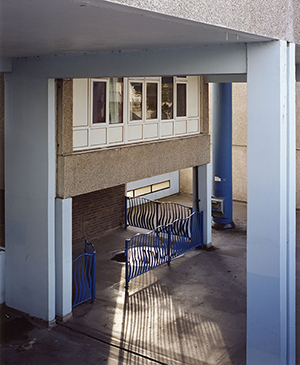
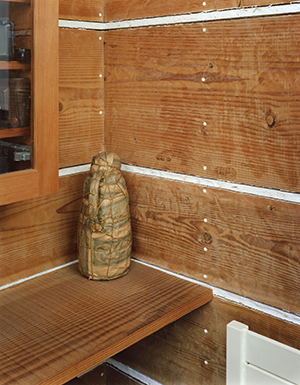
1.Naoya Hatakeyama From “Thamesmead” 2010
2.Naoya Hatakeyama From “Akasegawa’s Atlier” 2017
■Reference photos (Exhibition view of “Tsubaki-kai 2016 –shoshin–”)
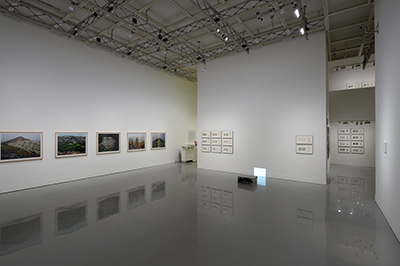
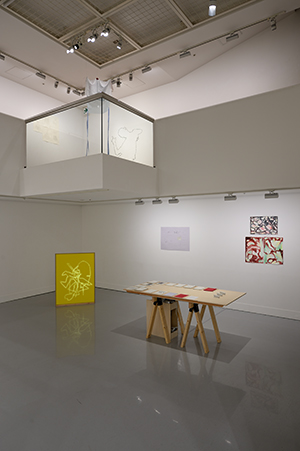
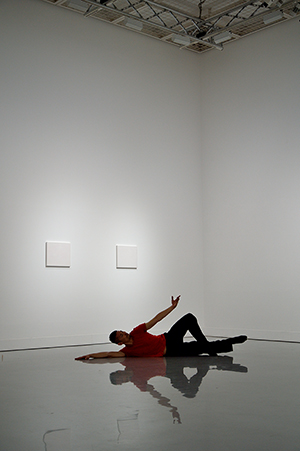
3, 4, 5.Exhibition views of “Tsubaki-kai 2016 –shoshin-”
Photo by Naoya Hatakeyama